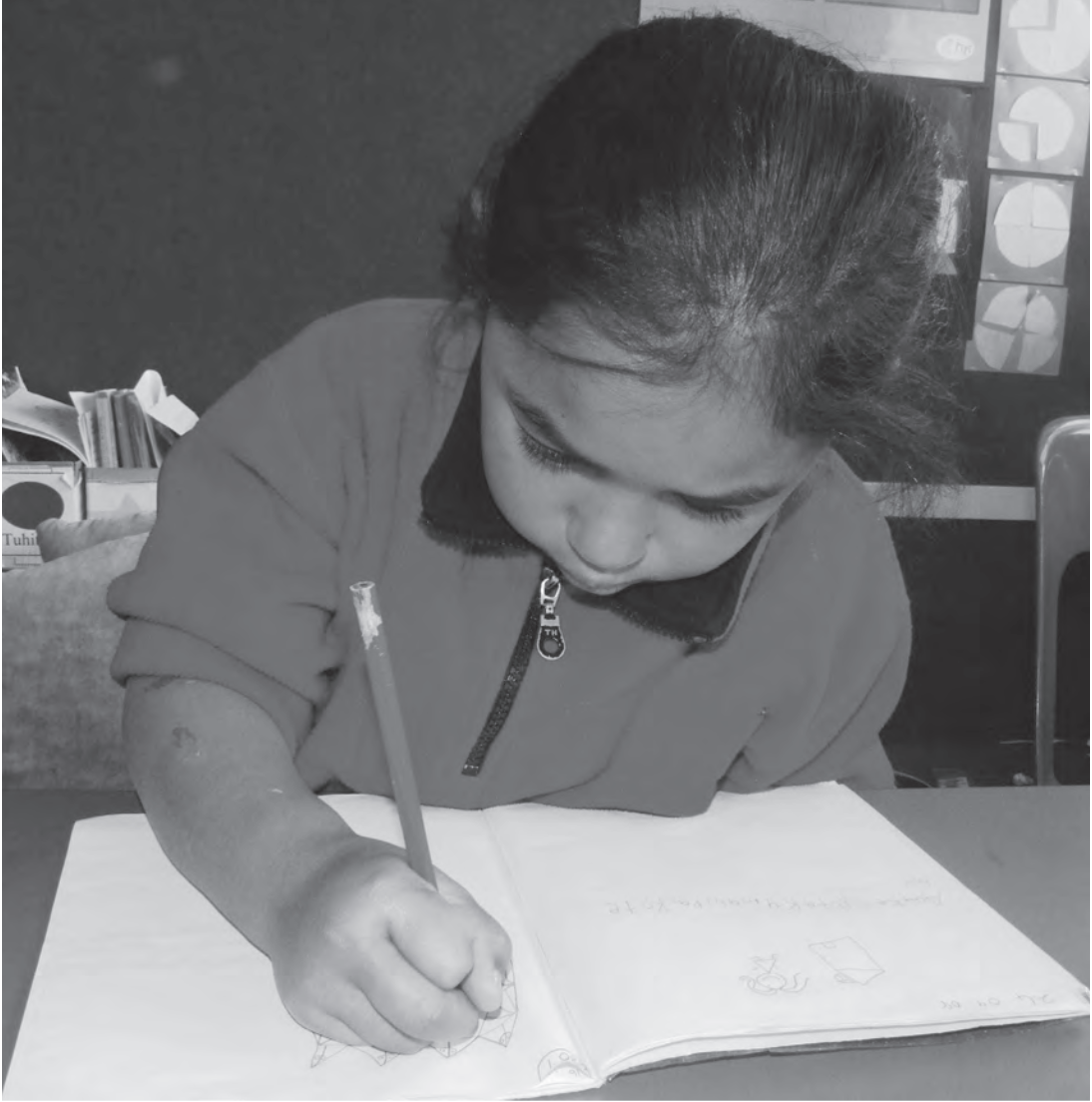I TE TAU TUATAHI
TE ARA WHAKAAKO I TE TUHITUHI
Whārangi Ihirangi
Mātua ko te Kōtuitui
Kaiako should explicitly plan to integrate the language strands, whakarongo, kōrero, pānui, tuhituhi, mātakitaki and whakaatu.
Language competency is critical for ākonga to successfully access the curriculum and learning that is relevant to their world.
It is important to make connections across the curriculum between prior knowledge and new knowledge by providing a range of stimulating and engaging experiences.
I te tau tuatahi: Te Ara Whakaako i te Tuhituhi
Te whakamāramatanga me ngā āhuatanga
TUHITUHI NGĀTAHI | SHARED WRITING
Tuhituhi Ngātahi should be used as the primary instructional approach. This is a collaborative writing experience where the kaiako takes on the role of scribe, recording the ideas and contributions of the ākonga. In this way, the kaiako models being a writer. Tuhituhi Ngātahi allows ākonga to participate in creating a written text that they may not yet be able to create on their own.
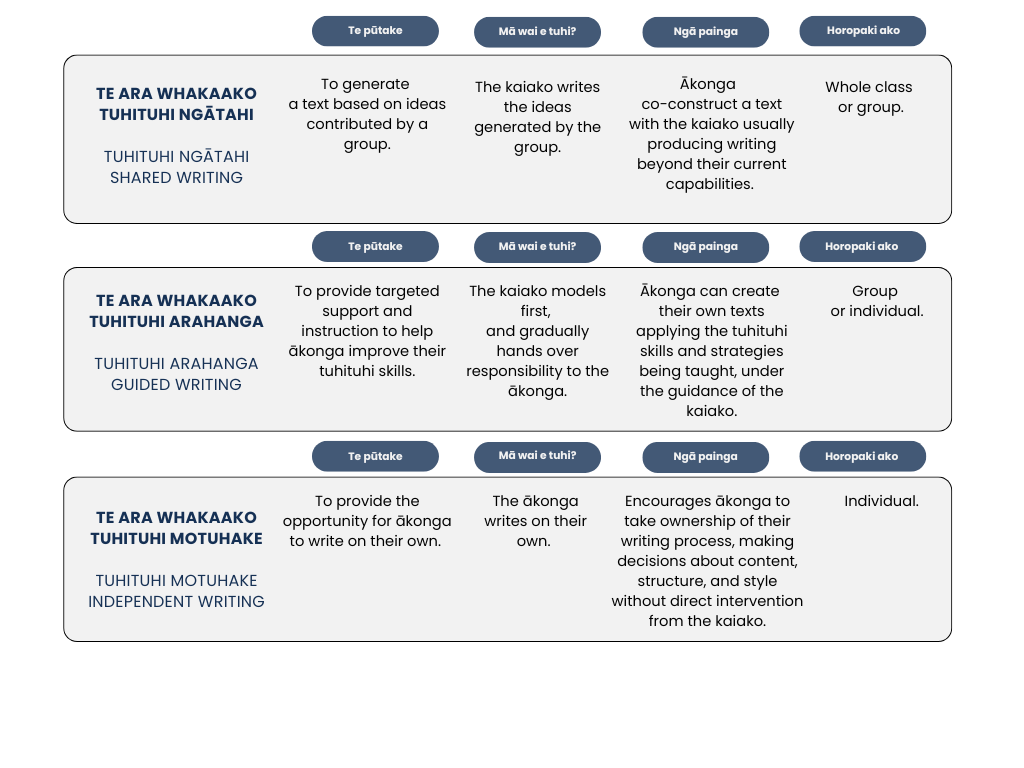
I te tau tuatahi: Te Whakahaere i te Tuhituhi Ngātahi
In the first year, ākonga should be encouraged to produce 'writing' for the following purposes:
To recount a personal experience.
To retell a simple narrative.
They should also be exposed to other purposes such as:
To describe something or someone.
To provide instructions to carry out a simple task.
To acknowledge a person.
Te tukanga tuhituhi ngātahi
Whakarite
Kaiako and ākonga think of ideas together for what they want to write.
Talk about how to start their writing and what they want to say.
Contribute to arranging the sequence of events for the writing.
Whakatakoto
The kaiako writes down the words and sounds ākonga say, helping them see how words are formed and how words create sentences.
The kaiako shows how to write letters and make sentences, using letters and simple words the ākonga know.
Whakamārama
They look at what they've written together, making sure it makes sense.
They talk about why they picked certain words and how those words tell their story.
Whakatika
They make their writing clearer by adding more details or fixing mistakes.
The kaiako helps with letters and sounds to make sure the words are correct.
Whakaputa / Tuku Atu, Tuku Mai
After making changes, they write a neat version of their story.
The ākonga share their writing with peers or family, who listen and respond appropriately about their work.
I te tau tuatahi: Te Tuhinga Māhorahora
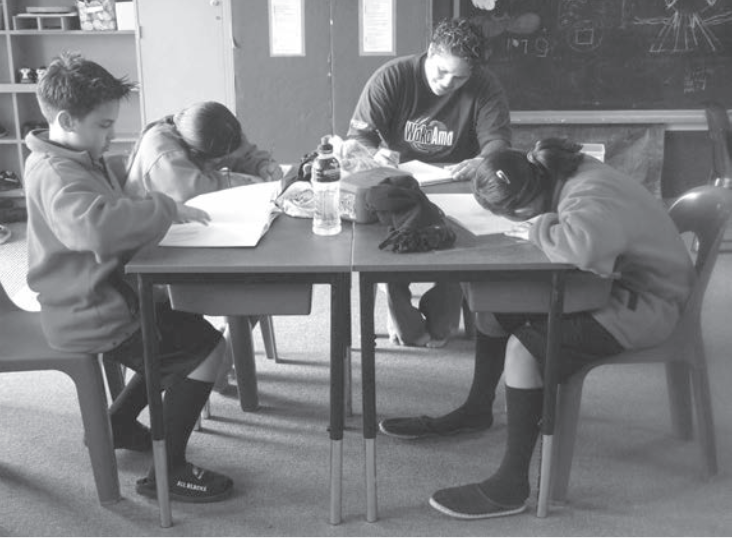
Write everyday about topics of their choice.
Write about their own experiences, interests and things they know.
Use writing to express thoughts, feelings and ideas.
Take a piece of their chosen free-writing through the writing process and prepare for publishing.
I te tau tuatahi: Ngā Toi Mokopuna - Tuhituhi
This section outlines the skills, strategies and knowledge required in tuhituhi in the first year.
I ngā mārama e ono
I te tau tuatahi
I ngā marama tekau mā waru ki te tau tuatoru
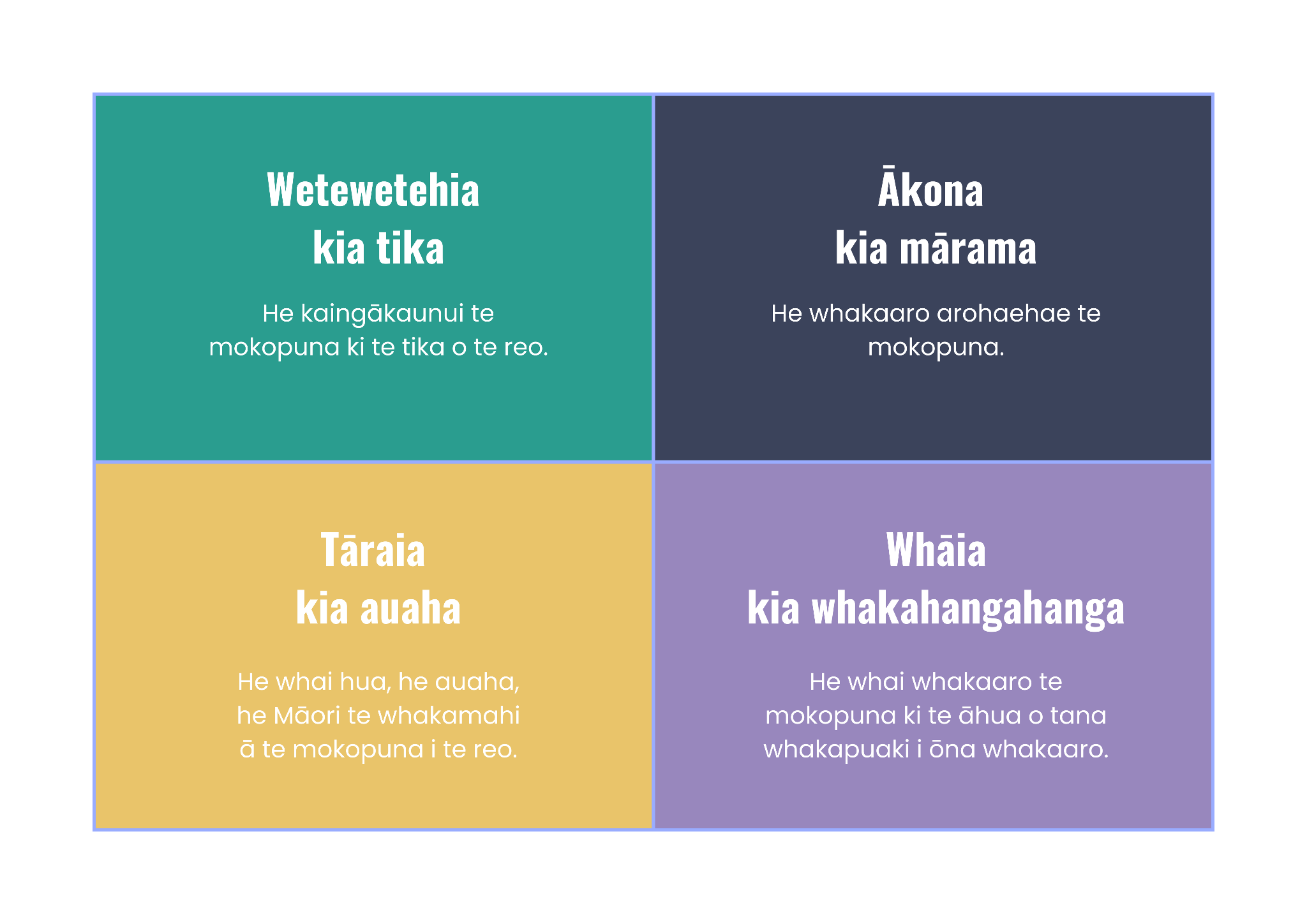
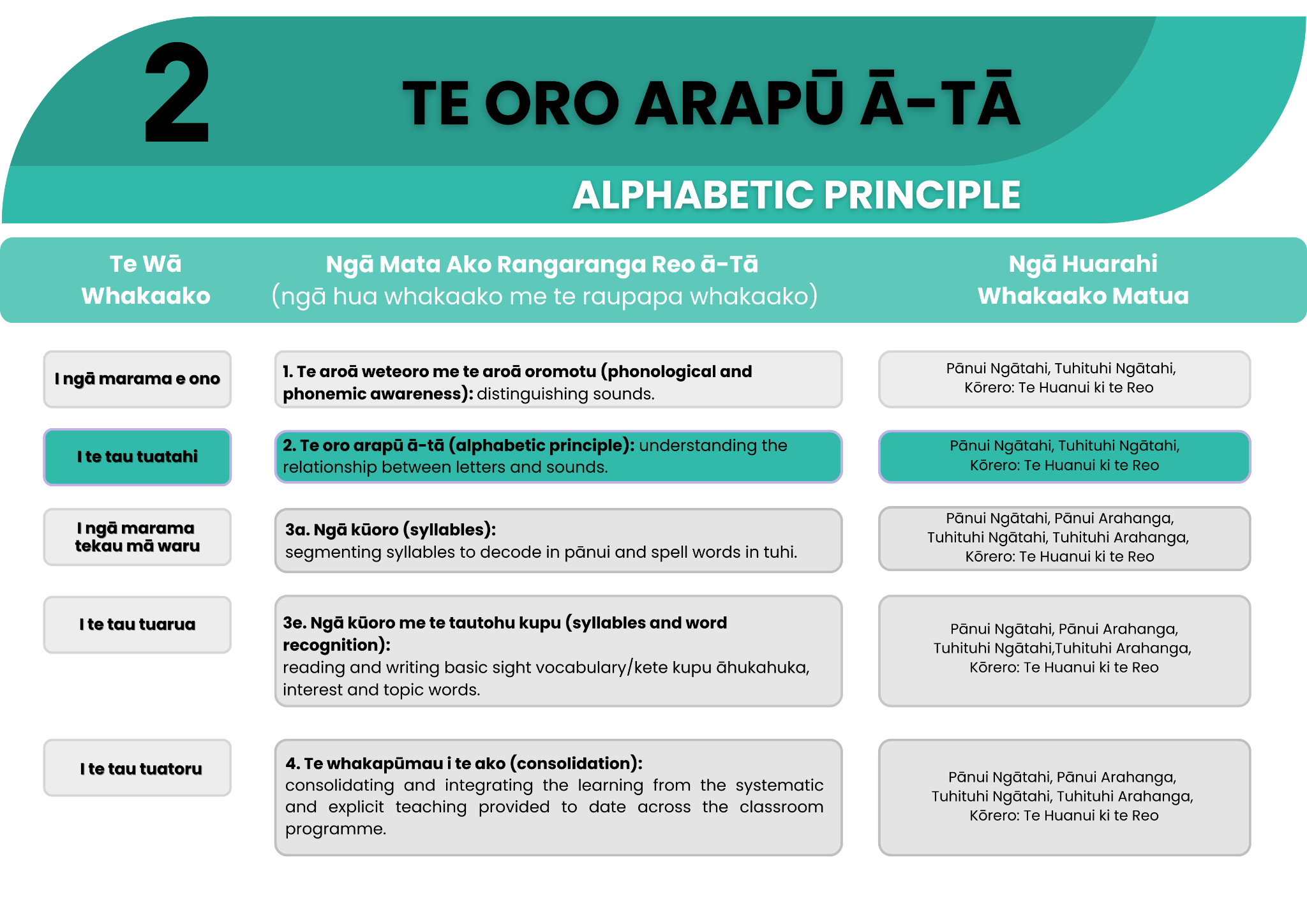
Wetewetehia kia tika
He kaingākaunui te mokopuna ki te tika o te reo.
Te whāinga
Ākonga learning focuses on accurately using and understanding basic vocabulary and sentence structures.
Rangaranga Reo ā-Tā
Ngā Tohu Ako
Te ngako o te whāinga
During a tuhituhi lesson, support the ākonga to:
(Rangaranga Reo ā-Tā: Te Oro Arapū ā-Tā) Understand the relationship between letters and sounds.
Write from left to right and top to bottom.
Use some basic sentence beginnings when rehearsing text to be written, including; He…, Ko…, and Kei te …..
Recognise and use full stops.
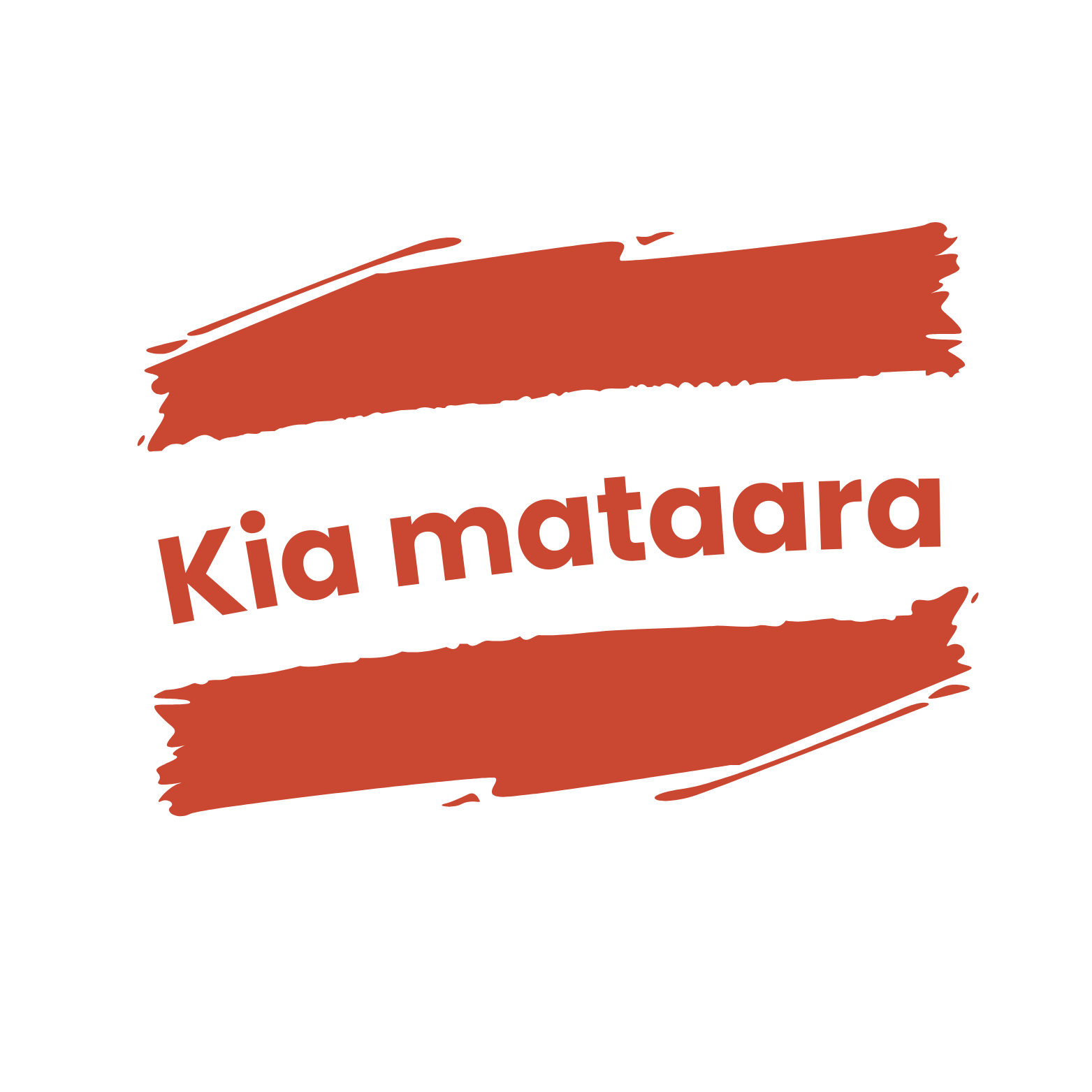
By the end of 1 year at kura, ākonga need to be able to:
make a connection between the phoneme and grapheme during reading, and make a connection between the grapheme and phoneme during writing.
Ākona kia mārama
He whakaaro arohaehae te mokopuna.
Te whāinga
Ākonga learning focuses on developing basic comprehension skills and strategies.
Ngā Tohu Ako
Te ngako o te whāinga
During a tuhituhi lesson, support ākonga to:
Discuss the topic before writing, using both talking and drawing to brainstorm and generate ideas.
Talk about their writing in order to clarify the message.
Provide illustrations for published work created during the tuhi ngātahi process.
Talk about what they are learning.
Pūtake tuhituhi
Participate in creating texts for differing purposes through shared writing e.g., simple instructions, directions for how to get to a destination, personal recounts and descriptions; He Kura Taketake: Acknowledgements; announcements; pepehā.
Whāia kia whakahangahanga
He whai whakaaro te mokopuna ki te āhua o tana whakapuaki i ōna whakaaro.
Te whāinga
Ākonga learning focuses on developing basic interpersonal communication skills.
Ngā Tohu Ako
Te ngako o te whāinga
During a tuhituhi lesson, support ākonga to:
Understand that writing is published to make it available to others to read, enjoy and respond to. (Whakaputa/Tuku Atu, Tuku Mai).
Respond to the writing of others with support of the kaiako. (Tuku Mai).
Talk about what they have written including elaborating on their ideas by writing or talking about them. (Whakamārama).
Tuhinga māhorahora
Write freely on topics of ākonga choice using existing skills and knowledge.
Tāraia kia auaha
He whai hua, he auaha, he Māori te whakamahi a te mokopuna i te reo.
Te whāinga
Ākonga learning focuses on discovering ways to express thoughts and imagination.
Ngā Tohu Ako
Te ngako o te whāinga
During a tuhituhi lesson, support the ākonga to:
Say a sentence aloud before they write it.
Use the writing of the kaiako as a model to create their own texts.
Attempt the spelling of words by using sound/letter association.
I te tau tuatahi: Ngā Tauira Tuhituhi
The following samples of writing by ākonga are arranged in order of skill development from top left to bottom right. Here are examples of what ākonga writing might look like in the first year.
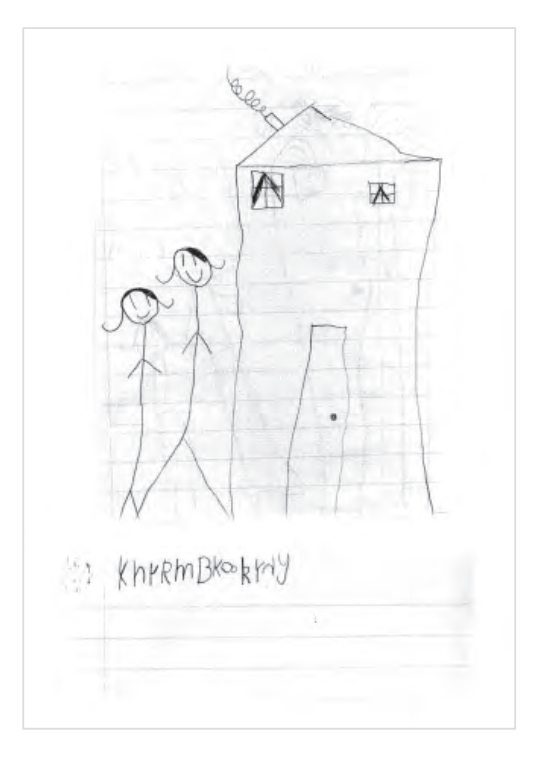
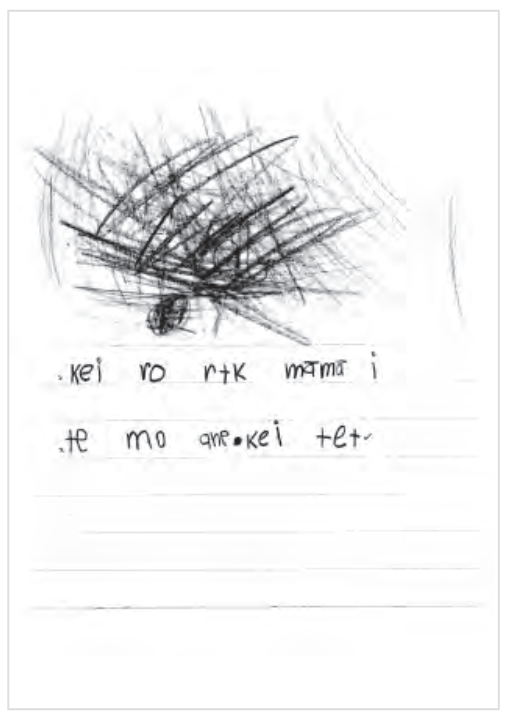
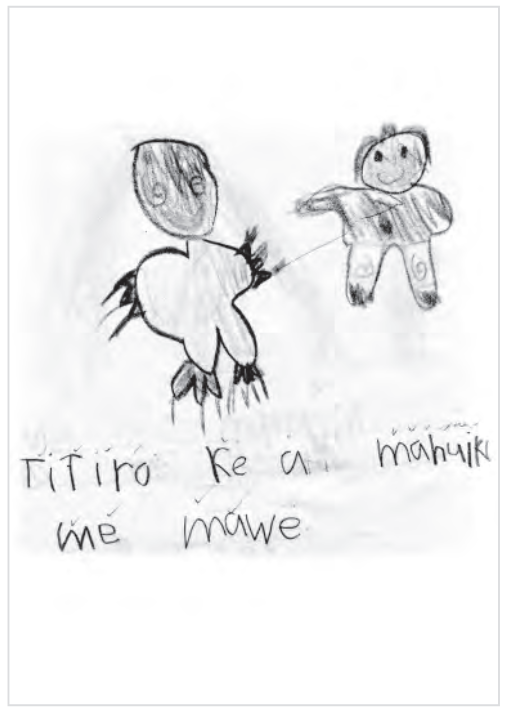
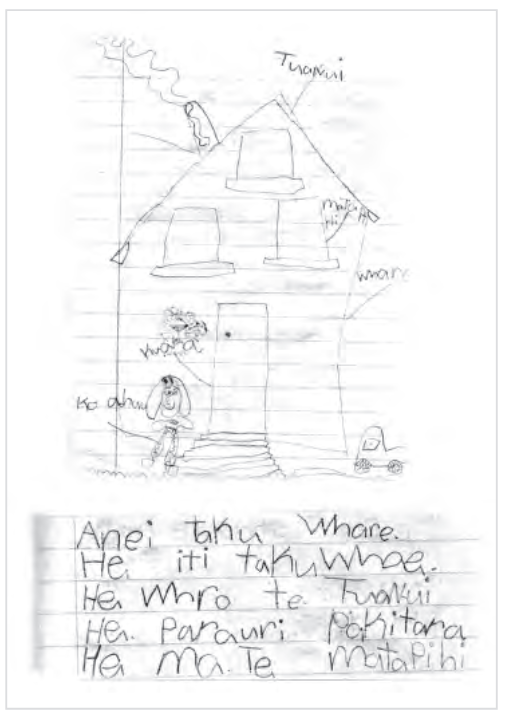
Source: Ka Rere te Manu ki te ao Tuhituhi, p.27, 29
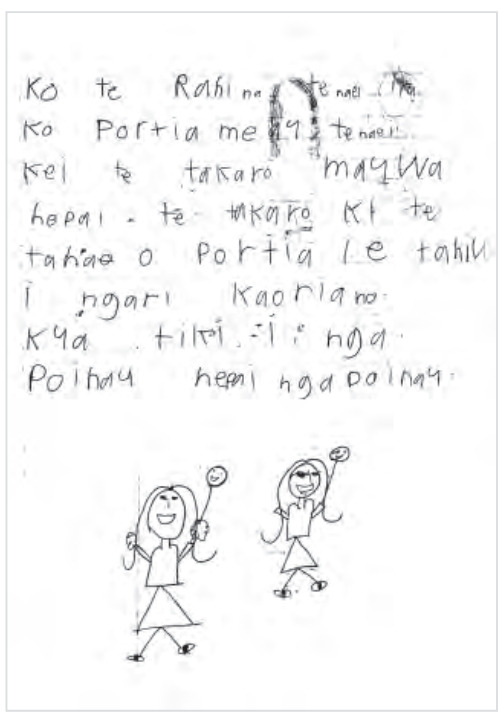
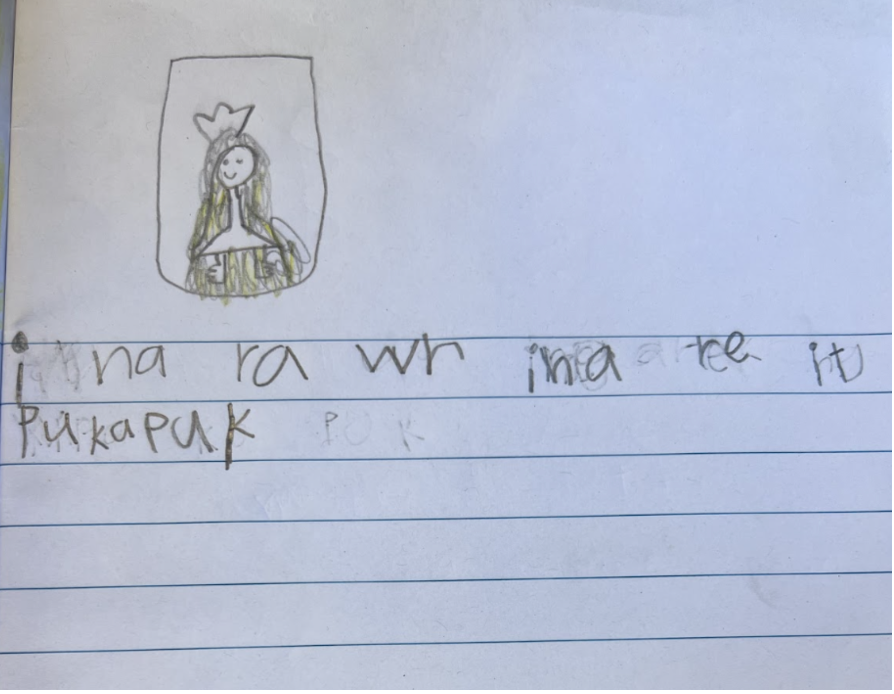
Source: Ākonga Samples | Richmond Road School
I te tau tuatahi: Te Aromatawai i te Tuhituhi
Aromatawai ō te ako (of learning ) and aromatawai mō te ako (for learning).
Aromatawai should be personalised to reflect the reality that ākonga are at different stages in their learning journey and move through that journey at different speeds. This includes valuing neurodiversity (i.e. that all brains function differently) which is particularly important for neurodivergent ākonga.
Ākonga should be encouraged and supported to understand the purpose of aromatawai and be active participants in gathering information through aromatawai activities such as self-reflection, self-assessment and the creation of portfolios of work that demonstrate their learning.
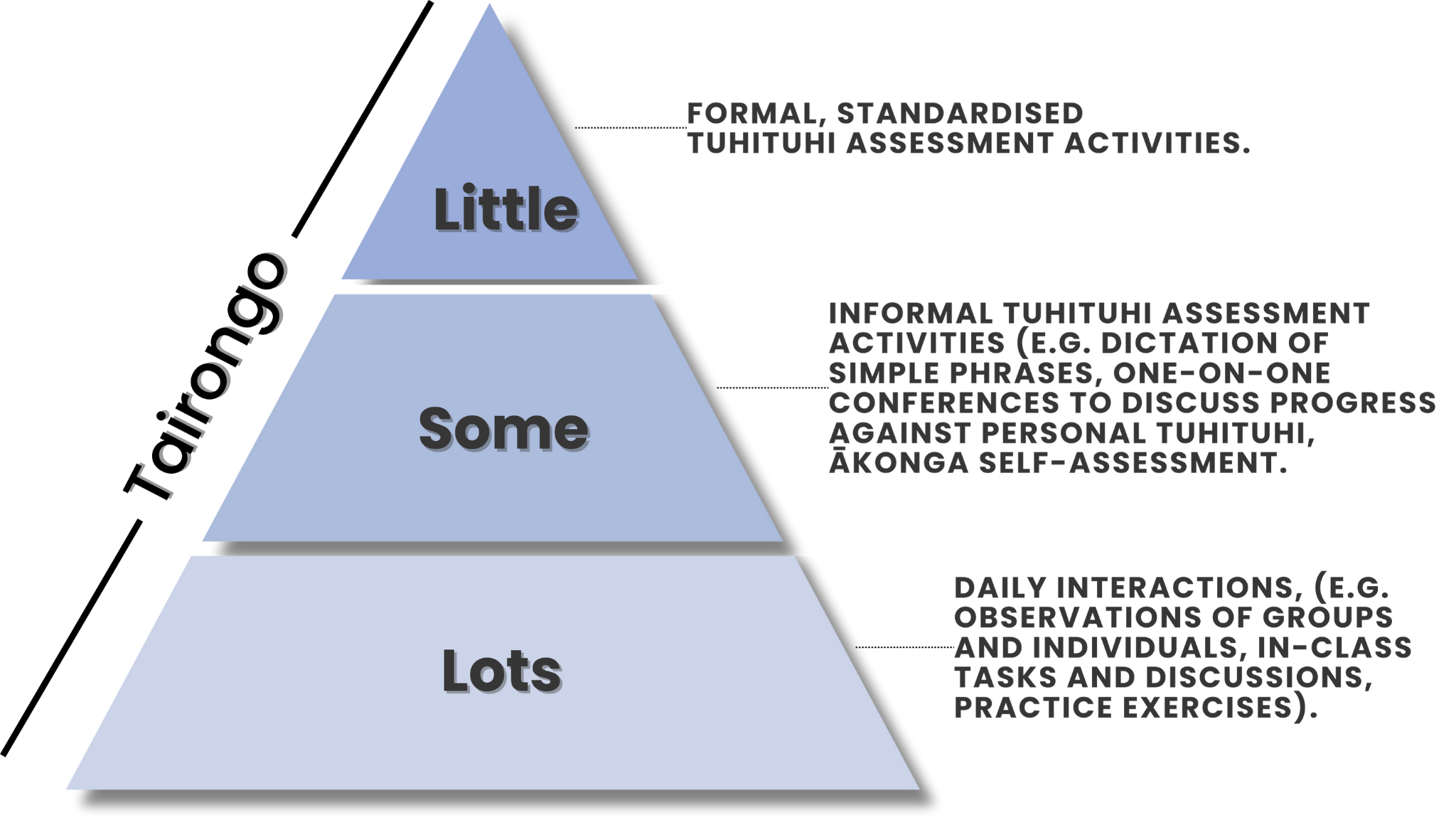
MAHI AROMATAWAI: What to look/listen for, ākonga are:
Rehearsing aloud what they intend to write before they write and during the writing.
Using words, phrases and sentences from a text used in pānui ngātahi in their writing and oral language.
Developing consistency of directional behaviours (left to right, return sweep).
Beginning to use letters (graphemes) in the right place in a word (e.g. the initial sound of a word is matched with the right grapheme).
Willingness to elaborate on what they have initially written after being prompted by the kaiako.
Willingness to form and practise the movements and shapes related to letter formation and in handwriting.
Physical coordination between movement when forming letters and verbalising the movements.
Forming letters correctly.
Consistency in shape, size, and slope.
Spacing within and between words.
I te tau tuatahi: He Huarahi Tuhituhi Anō
Tuhi atu, tuhi mai | Writing to:
Involves a kaiako or more skilled writer periodically crafting a written response to content a ākonga has produced.
The focus is on making a connection with the ākonga as a writer.
Tuhi tautokotahi | Writing with:
Involves everyone in the class (including the kaiako) writing during scheduled whole class 'free writing' sessions.
The focus is for everyone to write to meet their own personal needs.
Tuhi motuhake | Independent writing:
Refers to ākonga generating content on their own.
The focus is on fostering a love of writing. The writer also has the opportunity to practice their knowledge, skill and strategies without direct support from the kaiako.
